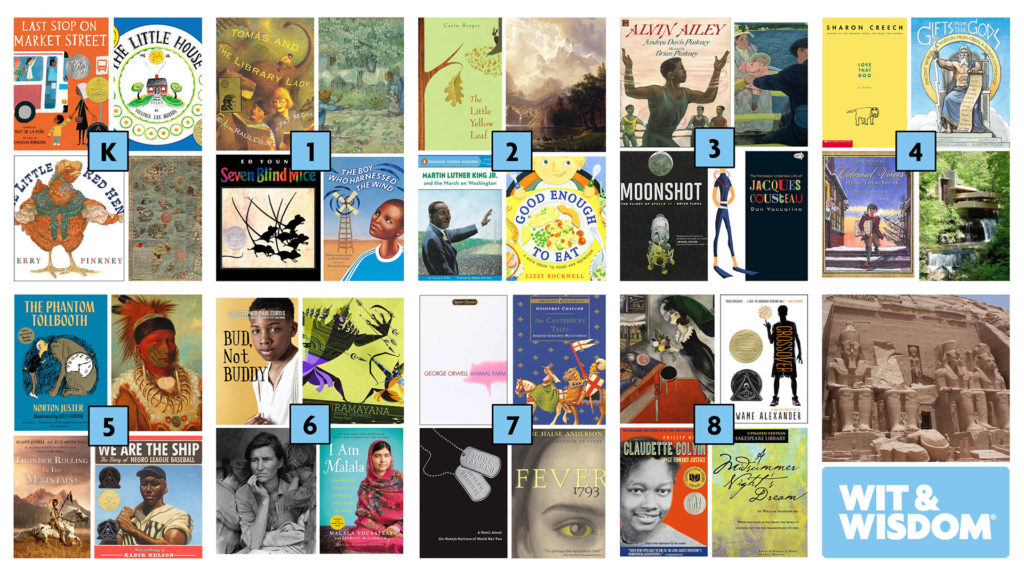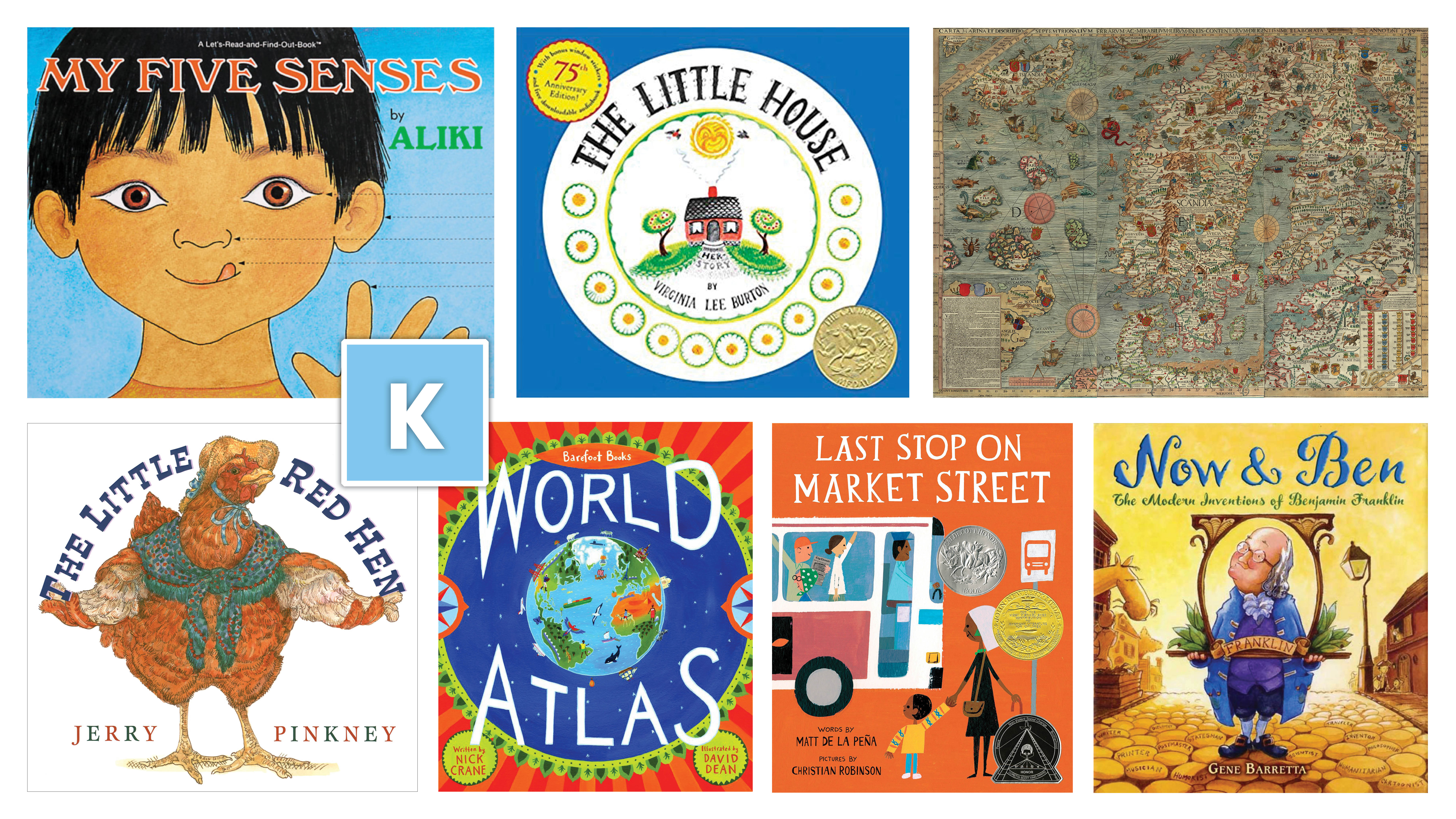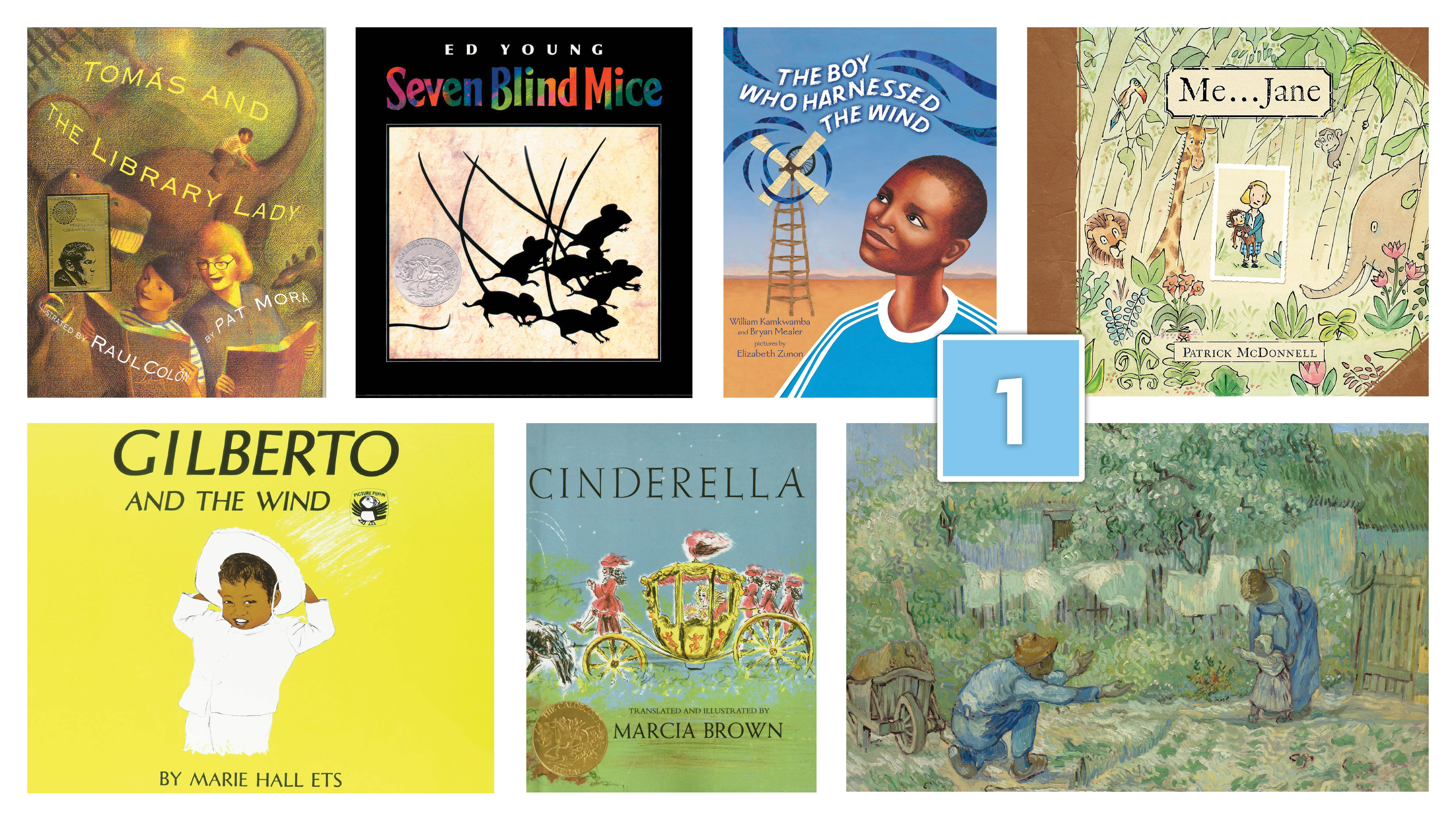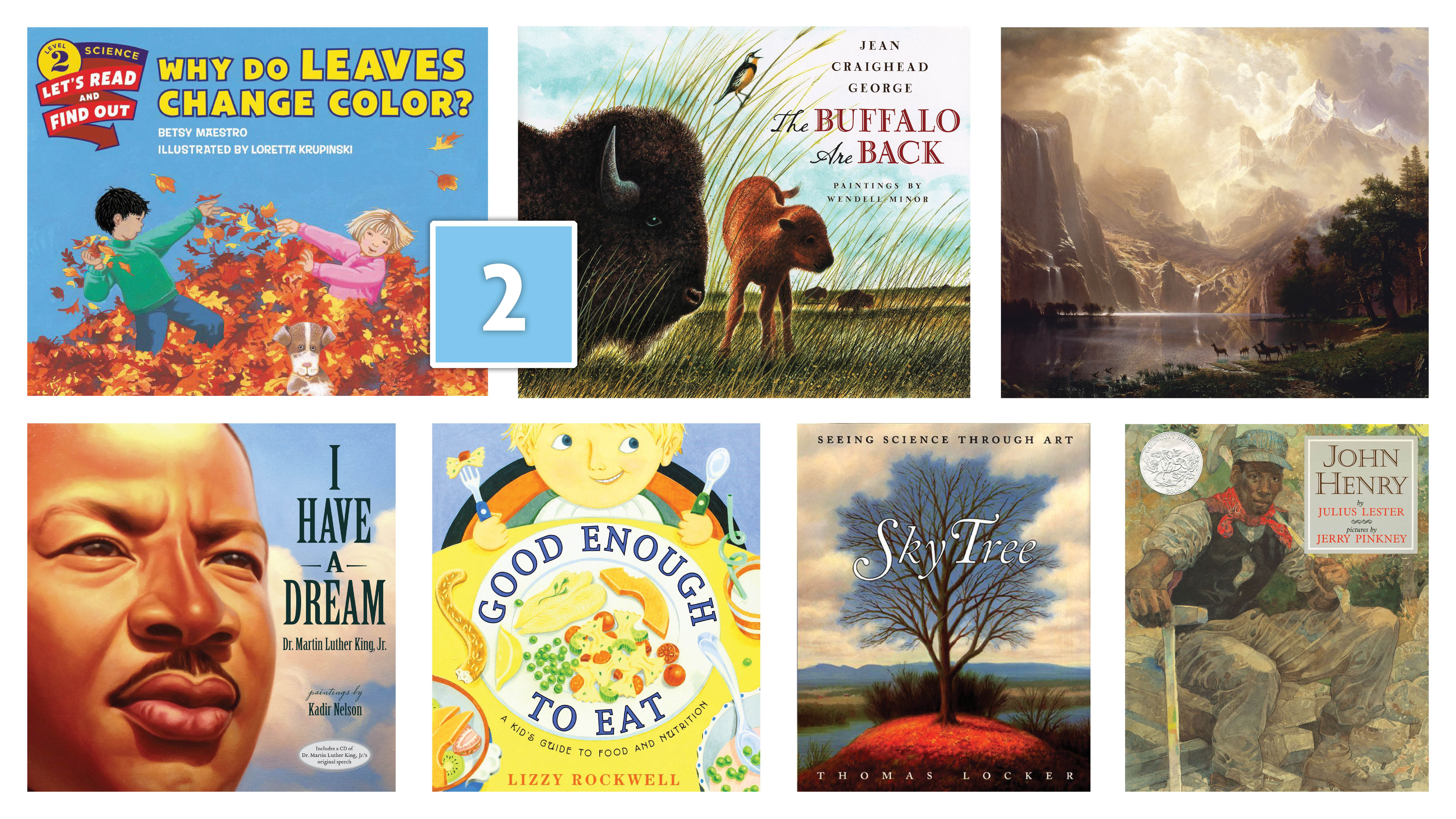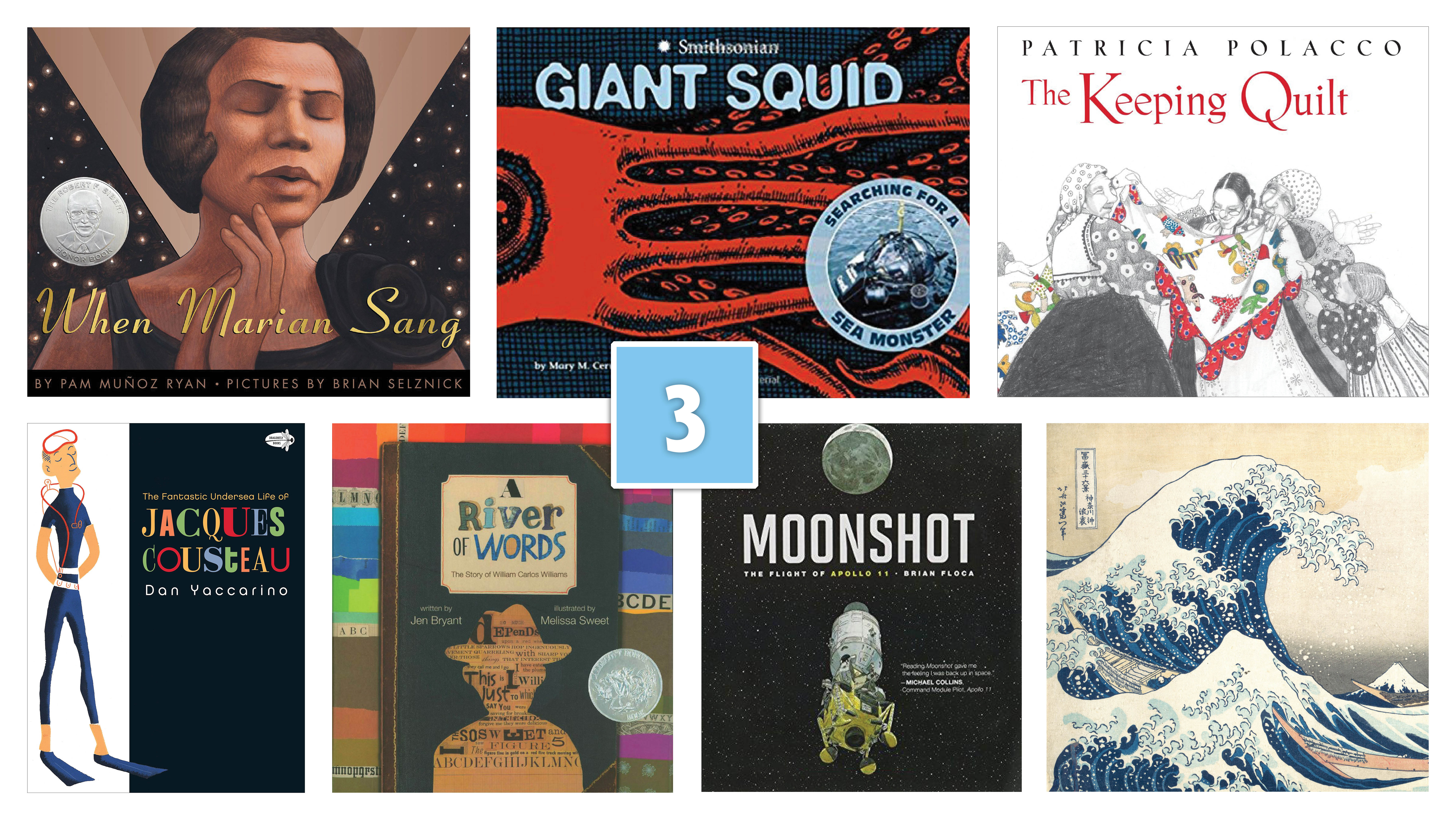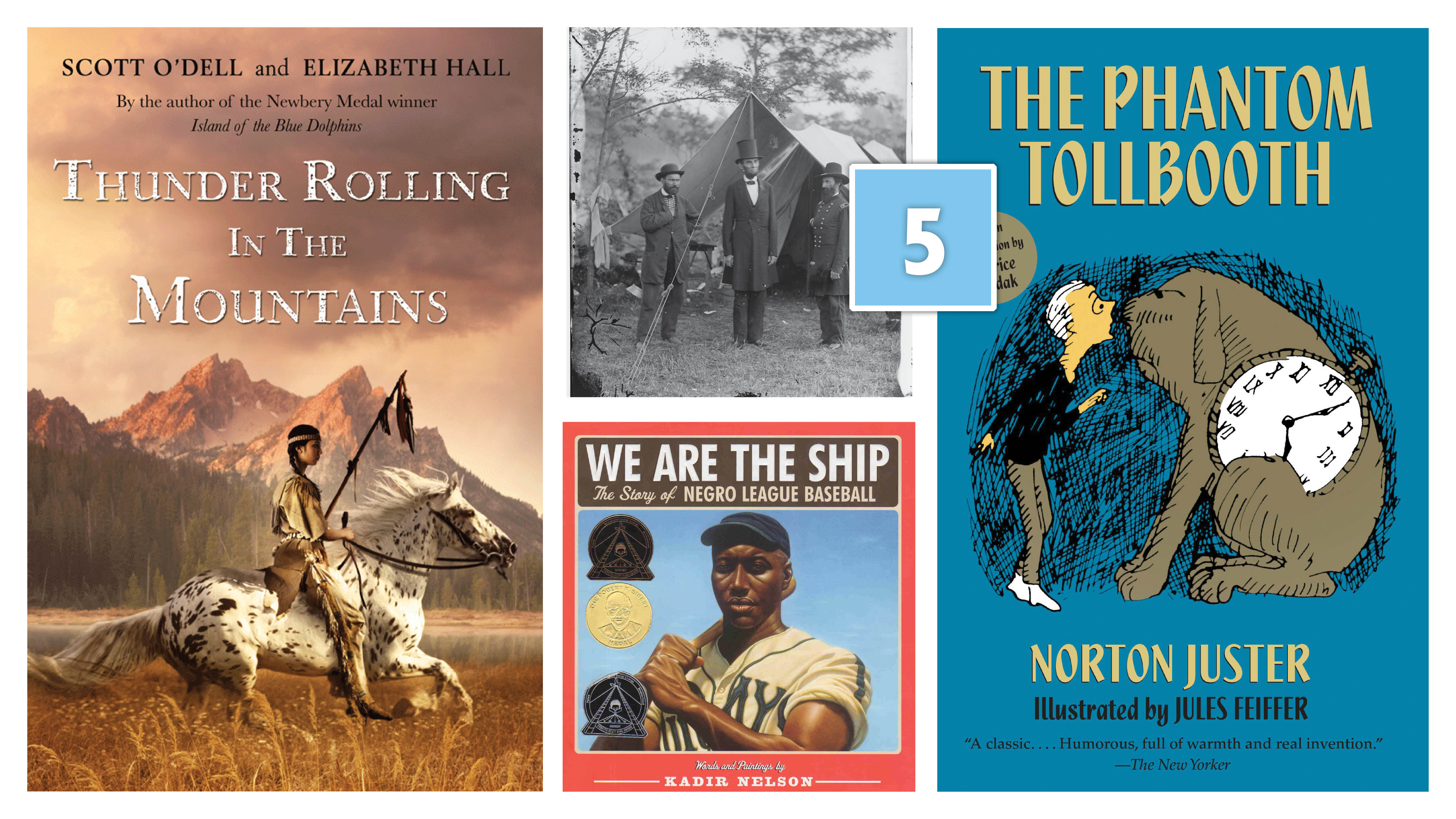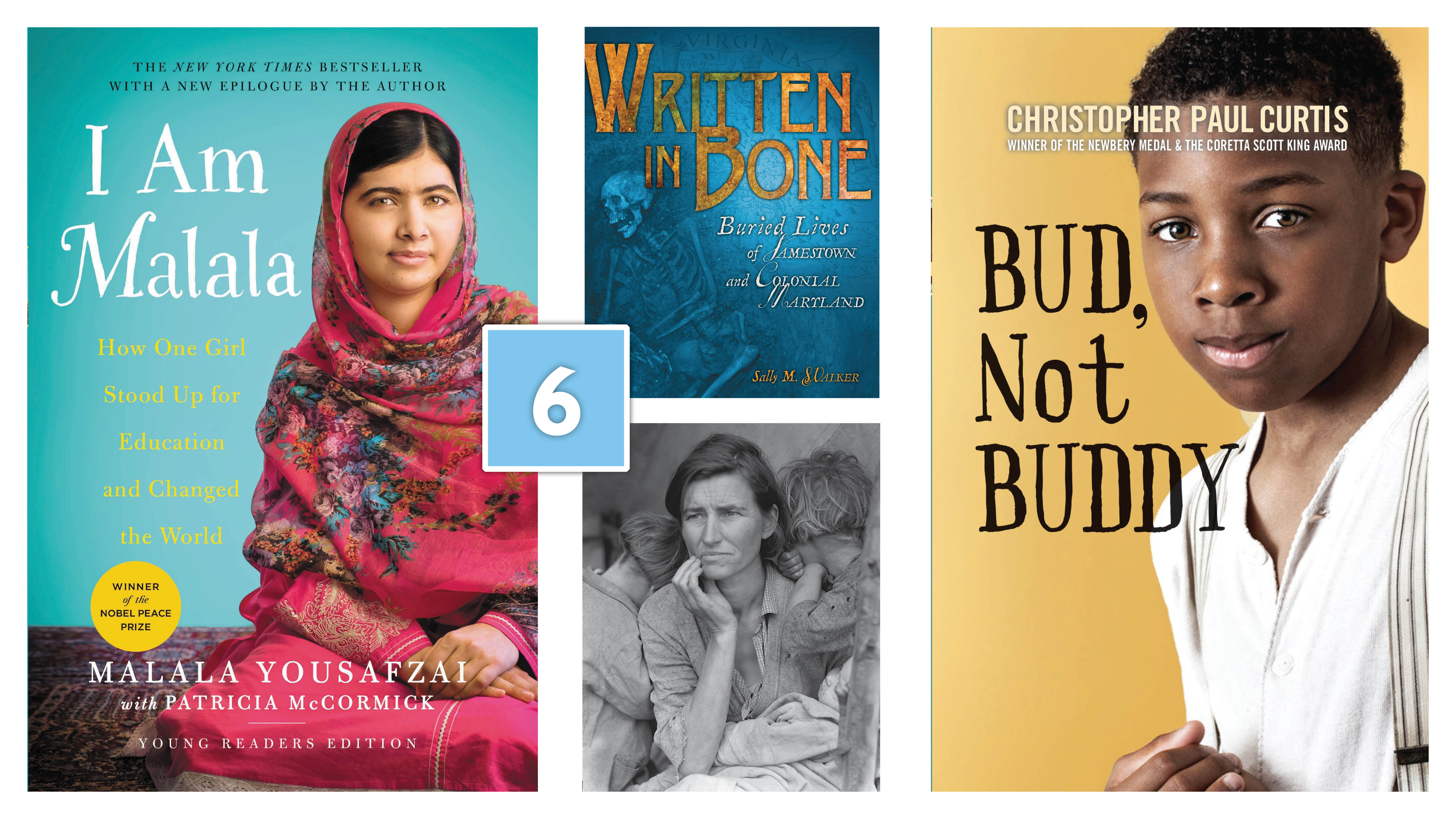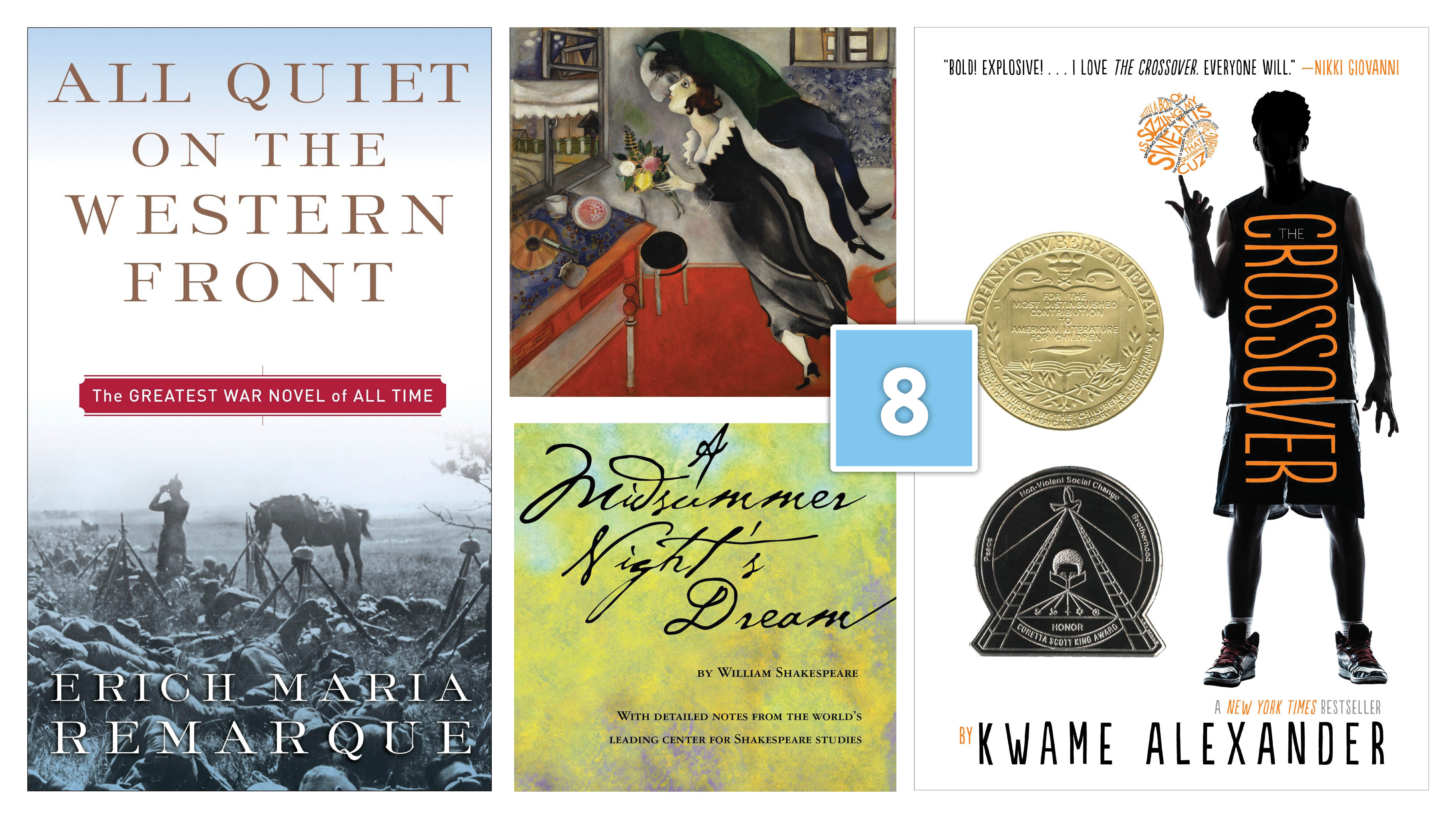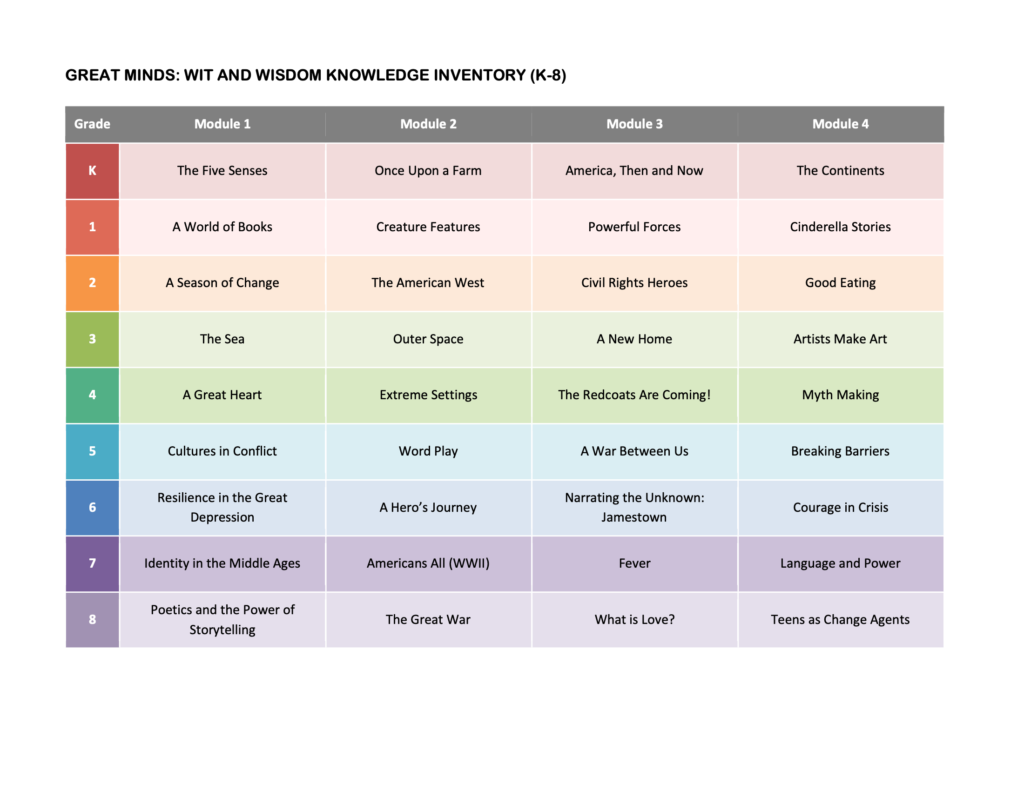Wit & Wisdom (K-8)
At Wit & Wisdom’s core is a framework of strategic questions designed to guide teachers and students through reading, writing, and speaking about exceptionally rich and diverse texts. Many award-winning favorites are included that showcase diverse perspectives. Instructional protocols drive deeply thoughtful inquiry into the material. Paintings, photographs, and music are thoroughly integrated and seamlessly connected to lesson studies. Artfully rendered, phonics-aligned, readable texts called “Geodes” reinforce students’ application of sound-spelling patterns connected to the topics studied.
Note: Arts & Letters is a new ELA curriculum from Great Minds that builds off the foundation of Wit & Wisdom. While it retains the core structure, four knowledge-building modules grounded in rich texts, it reflects updates based on feedback from educators and ongoing research. You can learn more about Art & Letters on Great Minds’ website.
Rich, rigorous, diverse texts:
How Wit & Wisdom designs for:
Deep knowledge building
Wit & Wisdom devotes six to eight weeks to explore each topic in tightly crafted, multi-faceted lesson sequences. In one grade 4 unit, “A Great Heart,” students explore the heart literally (as an organ) and figuratively (as the seat of courage and love), deepening their knowledge of multiple aspects of “heart.” A unique element of Wit & Wisdom is the close examination of artwork related to the core topics.
Discussions and activities are built into daily practice. Writing is text-based or text-inspired with clear instructional routines to support students. The program pays close attention—devoting 15 minutes daily—to building word knowledge through student-centered vocabulary and morphology routines. Other routines encourage students to engage independently with a range of topic-related texts.
Foundational skills and fluency for beginning and older readers
Wit & Wisdom does not have a foundational skills component for the early grades, but pairs with several highly rated research-based programs. Geodes, its unique decodable readers, go up through third grade and are aligned with ELA topics.
In the upper grades, grade-level fluency is effortlessly baked into lessons with passages that connect to the module topics. In lessons and homework, repeated oral readings of fluency excerpts help students to understand the texts and communicate more effectively about them. There is particular focus on decoding and grasping the elements of multisyllabic words. Language lessons, called “Deep Dives,” often focus on morphology and how words break into their constituent parts, calling students’ attention to the way words are constructed. For example, in Grade 6 Module 4, students learn the morphology of the prefix circum. Then they decode the word circumnavigation, applying their understanding to read a text about Shackleton’s journey to Antarctica. Through applying this strategy, called “Outside-In,” students understand word parts and the context in which the word appears in a text.
Wit and Wisdom’s Prologue provides additional support in grades 6-8. These supplementary lessons front-load essential knowledge, preparing striving readers and multilingual learners for whole-class instruction. Prologue lessons focus on explicit vocabulary and syntax instruction and opportunities for practicing oral language, deepening the understanding of module vocabulary, and making sense of the language used in complex text.
Equitable access to challenging texts
Close reading is supported by the consistent use of five research-grounded stages—Wonder, Organize, Reveal, Distill, and Know—to engage students in productive struggle and guide their multi-layered explorations of complex texts. Students are habitually asked to reflect on what they are learning and their attitudes about acquiring skills and knowledge.
Topics of study
Learning and exhibiting deep knowledge
Foundational skills instruction
Access Wit & Wisdom
Wit & Wisdom was developed and is distributed by Great Minds.
Wit & Wisdom (K-8) in districts
11/07/2023
“I’ve learned to step back and give the students more of the torch.”
06/06/2023
“You see the students engage in conversations that wouldn’t necessarily happened if the curriculum was different across the classrooms.”
06/06/2023
“I can say that I have grown with reading understanding. So now, if I read somebody asked me what I learned from the story, I can say a lot.”
06/06/2023
“You can see that they’re more comfortable and confident in their writing and in their conversations.”
06/06/2023
“If I just take the easy one, I’m not really pushing myself to learn harder.”
06/06/2023
“It is all there for us. So it makes it less stressful, and we are able to prepare more and be more prepared to teach it to the students.”
04/05/2022
“The basal had everything wrapped nice and neat, but it wasn’t challenging to our students.”
04/05/2022
“My greatest thing was just seeing how well the kids bought into this program…seeing the value you get back from the kids.”
11/09/2021
“Something I’m still working on is letting the kids struggle a little bit, letting them figure it out by themselves.”
11/09/2021
03/08/2021
03/03/2021
12/01/2020
03/31/2020
“They’re confident because they’ve heard it and because the way Wit & Wisdom is built it snowballs on each other.”
02/25/2020
“Wit & Wisdom allows them to bounce answers off of peers, collaborate their understandings, and realize they actually have it right.”
02/25/2020
“They love the text whereas before we got on board with Wit & Wisdom when I would have an inclusion class, they were not interested in reading.”
02/25/2020
02/25/2020
“Those kids were talking and usually they wouldn’t have felt comfortable with the text to say anything.”
02/25/2020
“I see kids are more engaged, kids have more confidence, they have more of a platform to share and reflect and talk with their peers.”
02/25/2020
“The Socratic seminars are great. They really enjoy those academic, text-based discussions.”
02/24/2020
“I’d ask, ‘well who’d you play with at recess?’ because that was really the only thing I could get out of them….This year it’s completely changed.”
02/24/2020
“They [teachers] still spend a lot of time outside the school day working… but it’s more rehearsing and fine-tuning.”
02/24/2020
“The connections and the discussions are there, and they were not before….Seeing the connections across subject areas is incredible.”
02/24/2020
02/24/2020
“We’re able to not just complete a lesson…but really sit and think about how it’s going to flow and what we’re expecting for the kids.”
02/24/2020
“What I thought was good was not what the teacher next to me thought….We didn’t have evidence to say ‘this is what writing has to look like.'”
02/24/2020
“They just love to come home and talk about what they’re reading.”
02/24/2020
“They are creating projects, having conversations with each other, and putting things on Google Drive about these texts that they are involved with.”
02/24/2020
“It’s a lot easier to implement classroom management techniques because it starts day one with our curriculum, embedding routines and procedures.”
02/24/2020
“With this curriculum, everyone is getting it, everyone is pushed. High learners, lower learners, everybody is being pushed.”
02/24/2020
“They can do the work. If you expect them to do the work, they’ll do it.”
02/24/2020
“They possess a lot more content knowledge than a lot of kids we see in high school.”
02/24/2020
03/18/2018
